Indwelling/Foley Catheters & Accessories
An indwelling or Foley urinary catheter is a type of catheter that remains in the bladder for a set time, as determined and monitored by your healthcare professional. These catheters connect to a drainage bag to continuously drain urine when needed.
The information on this website is for informational and educational purposes only and should not be considered medical advice or a treatment recommendation.
For guidance specific to your health, contact a healthcare professional.
Indwelling/Foley Catheters
The catheter prior to placement in the bladder.
Lorem ipsum dolor sit amet, consectetur adipiscing elit. Ut elit tellus, luctus nec ullamcorper mattis, pulvinar dapibus leo.
Sterile water is instilled into the catheter to inflate the balloon and then withdrawn before catheter removal.
The catheter connects to a drainage bag for urine collection.
Uninflated Balloon
Catheter prior to placement in the bladder.
Silicone-Elastomer Coated Latex Material
The device is inserted by a healthcare professional. Once inserted, the balloon is inflated (as shown below) — this balloon holds/retains the catheter in the bladder.
Sterile water is instilled into the catheter to inflate the balloon and then withdrawn before catheter removal.
The catheter connects to a drainage bag for urine collection.
Inflated Balloon
Balloon is inflated once it is inserted into the bladder.
100% Silicone Material
This is the dual-balloon urinary catheter proprietary to HR HealthCare. This catheter is designed to minimize trauma to the bladder, thereby helping to reduce the possibility of bladder spasms, often caused by irritation, inflammation, or constant stimulation from the catheter.1,2,3,4,5,6

The catheter connects to a drainage bag for urine collection.
Bladder-Retention Balloon Provides secure placement in the bladder.
Bladder-Protection Balloon
The catheter tip is subsumed the balloon. Once inflated, there is no longer a pointed tip like the standard Foley.
100% Silicone Material
Dual-Balloon
Indwelling/Foley Catheter Accessories
Before inflation of the catheter balloon, the catheter will be connected to a drainage bag for urine collection. There are two main types of collection bags: smaller leg bags, which are typically used for daytime or smaller volume collection, and larger night bags, which are designed for overnight or higher volume collection.
Following connection to a drainage bag, the catheter will be secured to the body. The Foley securement product helps prevent pulling and movement, ensuring it remains in place within the bladder.
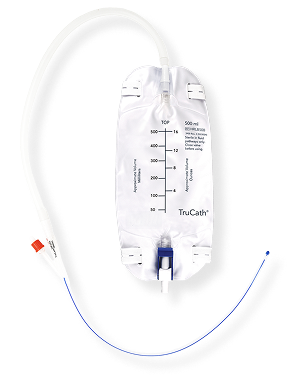
This is the Foley catheter that is placed in the bladder.
This is the Foley catheter that is placed in the bladder.
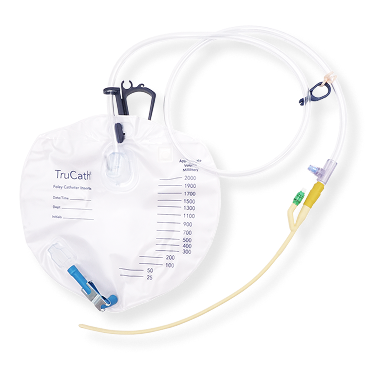
Double hanger secures the bag to a walker, wheelchair, or bed
This is the Foley catheter that is placed in the bladder.
This type of collection device is attached to the leg for secure movement.
This is the Foley catheter that is placed in the bladder.
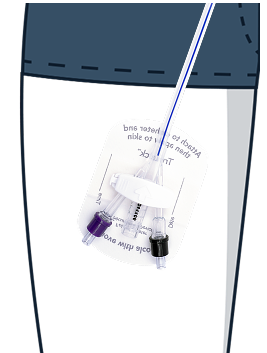
Base Material
Adhesive-backed mesh cloth made of a polyester fiber attaches to the body for stabilization
The clamp rotates in all directions (360°), enhancing comfort and adaptability.
HR HealthCare Products
TruCath Silicone-Elastomer Coated Latex
Indwelling catheters featuring a latex core for flexibility and patient comfort while the silicone-elastomer coating helps reduce the potential for encrustation and mucosal irritation.
TruCath 100% Silicone
Indwelling catheters featuring a 100% silicone material to support safety for patients with latex sensitivity or latex allergies.
TruCath Duo 100% Silicone Dual-Balloon
Designed to help address frequent challenges posed by standard Foley catheters, such as the risk of bladder mucosa damage, the occurrence of bladder spasms, and the potential for infection.

TruCath Leg Bags
Available in 500 ml and 1000 ml sizes,
this product features a flocked back, a convenient flip-drainage port, and comes with preattached leg straps.
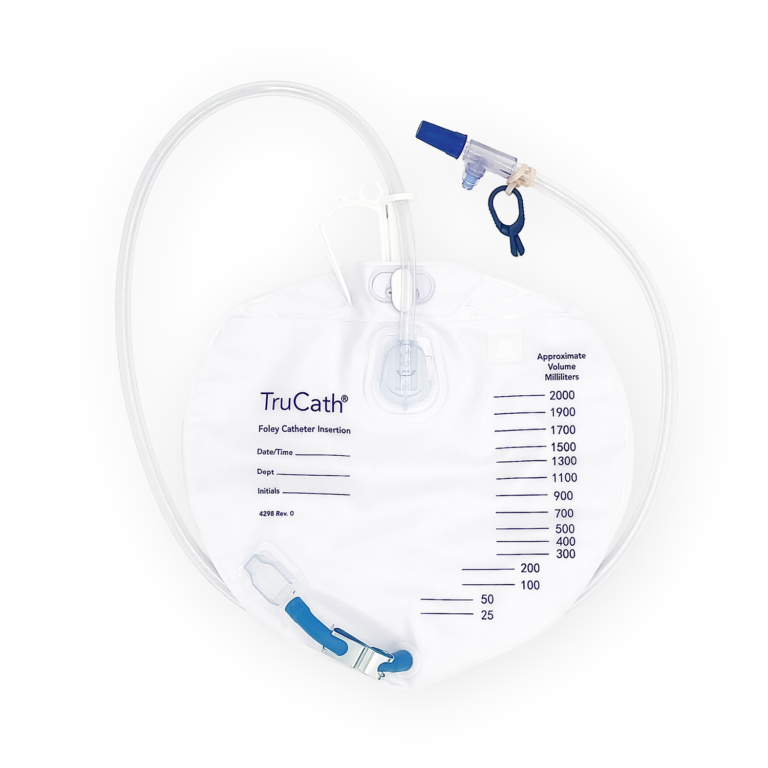
TruCath Night Drainage Bags
Available in 2000 ml and 4000 ml sizes, this diamond-shaped product features a T-tap drainage valve, a sample port, and a double hanger for secure attachment to a walker, wheelchair, or bed.
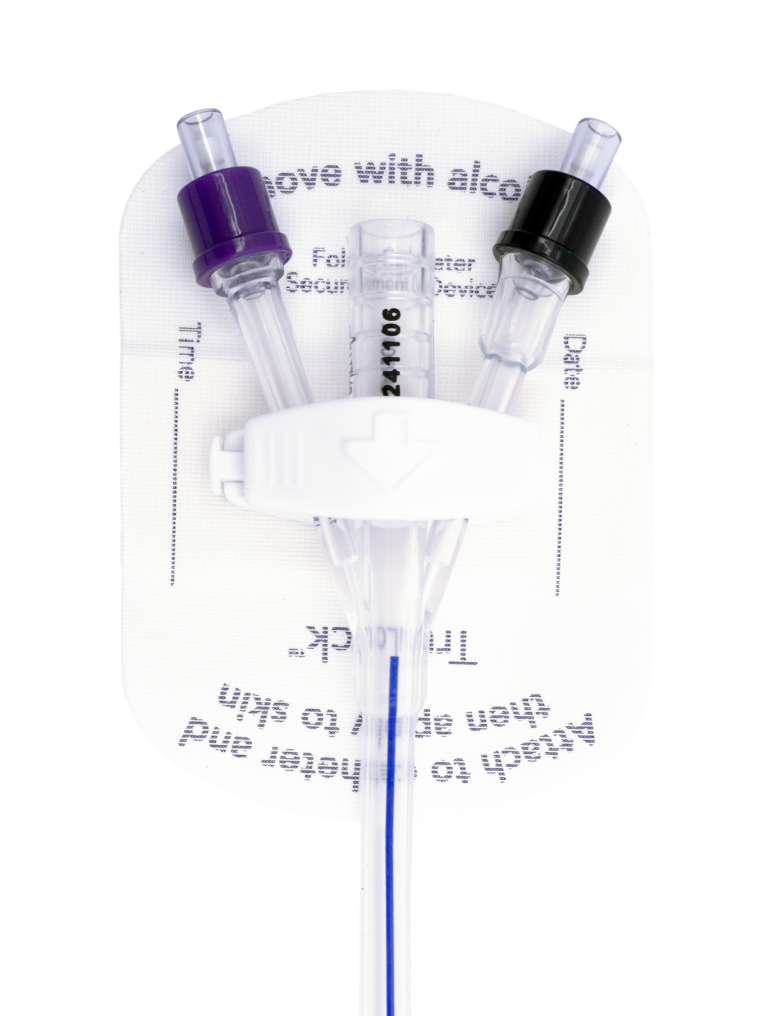
TruLock Foley Catheter Securement Device
Designed to hold a Foley catheter in place and support correct positioning in the bladder for urinary drainage.
References: 1. Norden CW, Green GM, Kass EH. Antibacterial mechanisms of the urinary bladder. J Clin Invest. 1968 Dec;47(12):2689-700. doi: 10.1172/JCI105952. PMID: 4881768; PMCID: PMC297440. http://www.ncbi.nlm.nih.gov/pmc/articles/PMC297440/ 2. Parsons CL, Mulholland SG. Bladder surface mucin. Its antibacterial effect against various bacterial species. Am J Pathol. 1978 Nov;93(2):423-32. PMID: 362941; PMCID: PMC2018387. http://www.ncbi.nlm.nih.gov/pmc/articles/PMC2018387/ 3. Parsons CL, Mulholland SG, Anwar H. 1979. Antibacterial activity of bladder surface mucin duplicated by exogenous glycosaminoglycan (heparin). Infect Immun 24:.https://doi.org/10.1128/iai.24.2.552-557.197 4. COX CE, HINMAN F Jr. Experiments with induced bacteriuria, vesical emptying and bacterial growth on the mechanism of bladder defense to infection. J Urol. 1961 Dec;86:739-48. doi: 10.1016/S0022-5347(17)65257-1. PMID: 13881887. https://pubmed.ncbi.nlm.nih.gov/13881887/ 5. Wilson, Mary. (2008). Causes and management of indwelling urinary catheter- related pain. British journal of nursing (Mark Allen Publishing). 17. 232-9. 10.12968/bjon.2008.17.4.28712. https://www.researchgate.net/publication/5438940_Causes_ and_management_of_indwelling_urinary_catheter-_related_pain 6. Saint S, Trautner BW, Fowler KE, et al. A Multicenter Study of Patient-Reported Infectious and Noninfectious Complications Associated With Indwelling Urethral Catheters. JAMA Intern Med. 2018;178(8):1078–1085. doi:10.1001/jamainternmed.2018.2417. https://jamanetwork.com/journals/jamainternalmedicine/fullarticle/2686144#google_vignette


